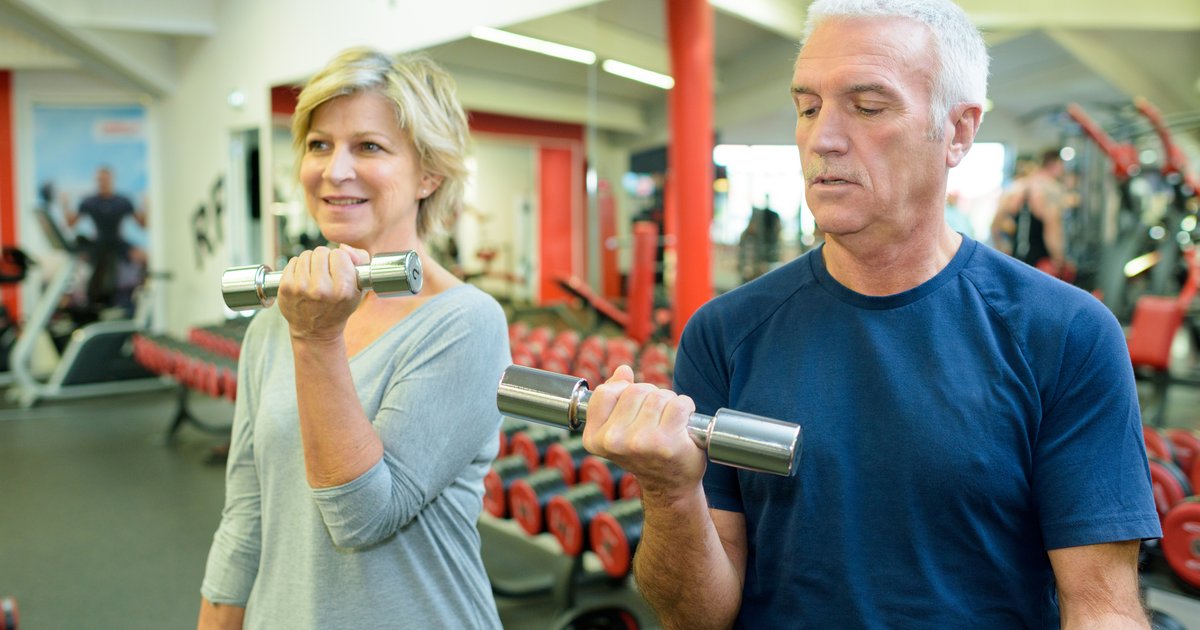The American population is aging, and the fitness industry is adjusting

When it comes to men and women over 50 who aspire to live healthy, 2025 could be a banner year.
Why? Well, the numbers tell the story, and this year, more than ever, they translate into expanded resources and an increased focus on the health and well-being of the over 50 set. That’s because the number of Americans over 50 continues to grow and there’s a mounting gap between lifespan and what is known as “healthspan,” the number of years that a person lives free of significant illness or disease.
Combined, these metrics tell the tale of an aging population living with chronic disease, less-than-optimal quality of life and functional fitness. It’s not a pleasant thought, and one with huge implications for our nation’s policymakers.
For now, I’ll leave the macro issues to the incoming administration in Washington and focus on what we can do as individuals to shape our own destinies and fight off the trends that would have us doomed to lives of incapacity and little fun. The good news is that many of us very much want to live healthy and enjoy life.
The aging population
According to the U.S. Census Bureau, Americans ages 45-64 comprise 25% of the population. Locally, we exceed this average, with Pennsylvania at 26.5%, New Jersey at 27%, and Delaware at 26.2%. Further, baby boomers are living longer, pushing the 65-plus population through the roof. It grew nearly 60% between 1980 and 2020, with two-thirds of that growth occurring since 2000.
These numbers represent challenges on many fronts. But for the health and fitness industry, they represent opportunity. This translates into more services and greater attention to the needs of an aging population that wants to continue looking good and feeling good.
The healthspan to lifespan gap
Having a long life is great, but if you’re not able to enjoy it, then maybe not so much. That’s the emerging message for baby boomers and Generation X.
Last summer, scientists at the University of Oxford and University College London published the results of a study that found baby boomers are expected to live longer than their predecessors, but they also are more likely to suffer from worse health than previous generations. This is known as “generational drift.”
The results are consistent with a 2020 study, also led by University College London, that found Generation X — people currently in their 40s and 50s — are more likely to suffer extended years of bad health than baby boomers, who are now in their 60s and 70s. Researchers attribute the plight of Generation X to conditions such as diabetes and obesity occurring at earlier stages in their lives.
So, what does this all mean?
According to the American Council on Science and Health, the U.S. has the largest healthspan to lifespan gap, at 12.4 years — 24% larger than expected based on U.S. life expectancy and 29% higher than the global average. American women have a healthspan to lifespan gap of 13.7 years — 2.6 years larger than men, and 32% above the global average. The organization found mental and substance use disorders, musculoskeletal diseases, genitourinary diseases and neurological disorders are the top contributors to years lived with disability.
A fitness industry tailored to aging adults
Despite the gaps between lifespan and health span, baby boomers and Generation X exhibit clear preferences when it comes to their aspirations, which drive the health and fitness industry.
In 2024, two firms serving the industry, ABC Ignite and ClubIntel, conducted a national study that analyzed the physical activity and fitness behaviors of these generations. Their findings revealed the workout preferences of the generations, and demonstrated how the industry works to tailor programs to meet their respective aspirations.
The study found boomers prioritize staying active and maintaining their health and vitality. Specific interests include improving mobility and enhancing overall well-being. This takes the form of low-impact exercises, fitness classes and targeted strength-training routines. Other interests include aqua aerobics, yoga and walking clubs.
Baby boomers also value learning and self-improvement and find interest in educational workshops, seminars and informational sessions on topics such as nutrition, injury prevention, stress management and healthy aging.
The study found Gen Xers are still navigating multiple tasks including careers and family obligations. They have hectic schedules and limited free time. Work-life balance and stress management are top priorities.
Like boomers, Gen Xers are increasingly concerned about maintaining their health and mobility as they age. Their interests include functional fitness programs that focus on improving strength, flexibility and mobility to support active and independent living. Additional preferences include workshops on injury prevention, joint health and age-appropriate exercise techniques.
The good news is that the health and fitness industry view these demographic, health and cultural metrics as a strategic opening, one that prompts people to come out to their fitness clubs, exercise classes and educational programs. A look at the industry’s 2025 trends demonstrates how the sector is tailoring their services to Baby Boomers and Generation X.
The American College of Sports Medicine’s Worldwide Survey of Fitness Trends identifies emerging trends that guide the health and fitness industry. Fitness programs for older adults rank at No. 3 among ACSM’s top 20 fitness trends for 2025. Exercise for mental health is No. 8, functional fitness training is No. 9, and lifestyle medicine is No. 13. ACSM lists utilization of health clubs by older adults as a factor behind the industry’s market rebound.
Your opportunity
So, if you’re one of my 50-plus followers, man or woman, or you have a 50-plus parent or loved one, take heart. There are more opportunities than ever to find a fitness club, class or at-home products tailored to our demographic. Their motivation is commercial gain, but that’s fine. Their gain can be yours and that’s how we can reverse these trends, one person at a time. The opening is here for 2025. Take advantage.
Louis Bezich, senior vice president and chief administrative officer at Cooper University Health Care, is author of “Crack The Code: 10 Proven Secrets that Motivate Healthy Behavior and Inspire Fulfillment in Men Over 50.” Read more from Louis on his website.
Related
Neck Cloud Launches Cervical Traction Device For US Fitness Enthusiasts
A new cervical traction device is being launched in the US aimed at fitness enthusiasts, offering a safer, more affordable, and more convenie
How Hyrox Took Over New York – and the Rest…
Hyrox returns to New York this May for a follow-up to last year’s NYC event, which put the popular fitness race on the map in America When
Jane Fonda, Yoga and ‘Pumping Iron’: How the 1970s Changed…
“I think of women’s fitness history as B.J. and A.J. — Before Jane and After Jane,” Ken Alan, a kinesiologist who taught aerobics in the 1970s, said in
Miss Ohio Stephanie Finoti wins fitness prize in Miss America…
Columbus native, Miss Ohio Stephanie Finoti runs for Miss AmericaGrowing up poor, Stephanie Finoti defied what some saw as insurmountable odds to become Miss Oh













